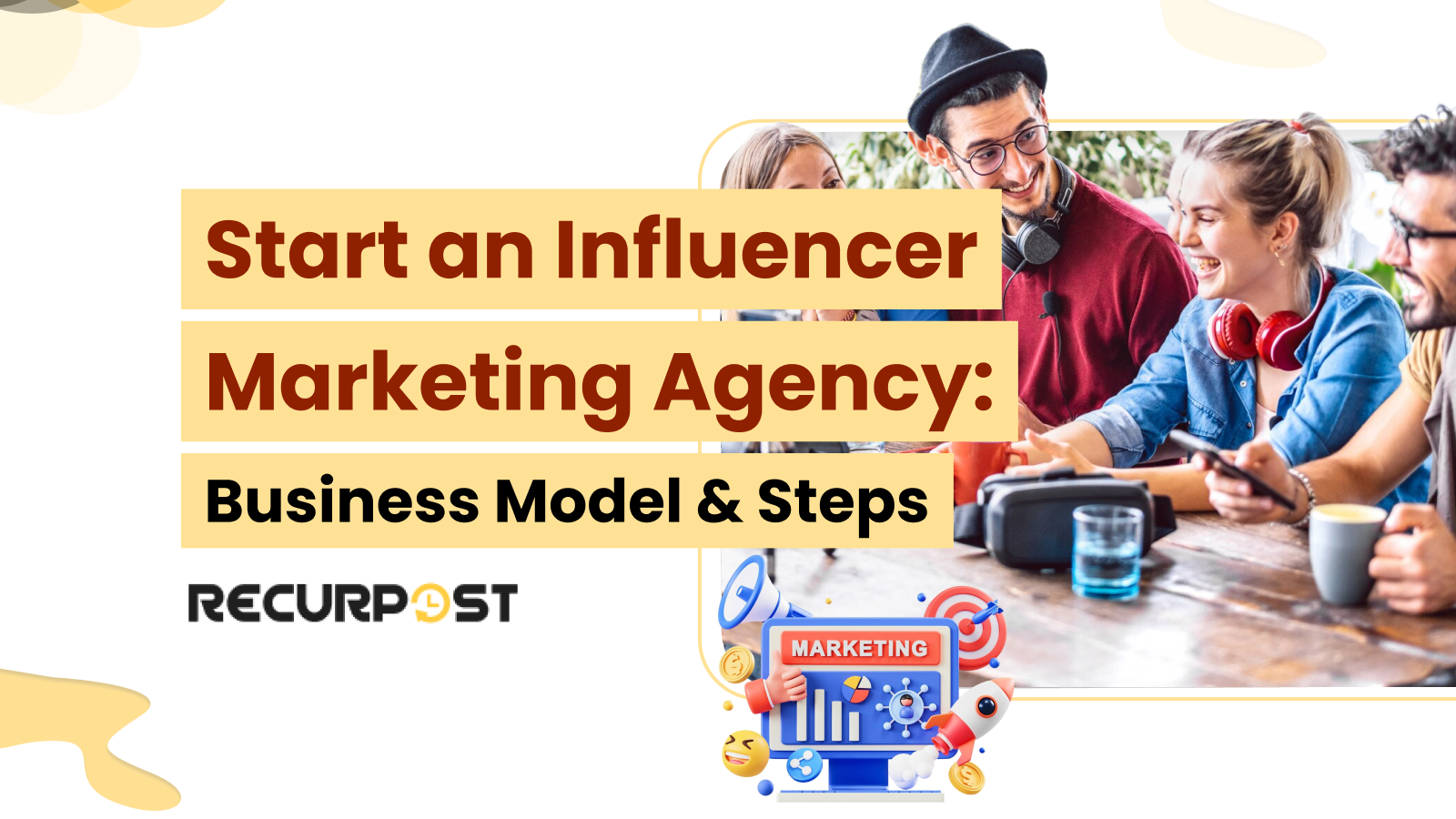How to start an influencer marketing agency and become the powerhouse behind successful social media stars?
The influencer economy grows rapidly, with smart agencies driving creator growth and partnerships. Brands now shift from one-off influencer posts toward genuine, long-term relationships beyond selling.
This guide outlines each influencer marketing agency step from building networks to creating business models that thrive in the digital era.

Influencer agencies will surpass $26 billion by 2025, making now an optimal time to enter the market as demand grows.[Source- Statista]
How to Start an Influencer Marketing Agency?
Starting an influencer marketing agency requires a strategic approach. This guide walks through essential steps to build and grow your agency successfully.
1. Identifying Your Niche
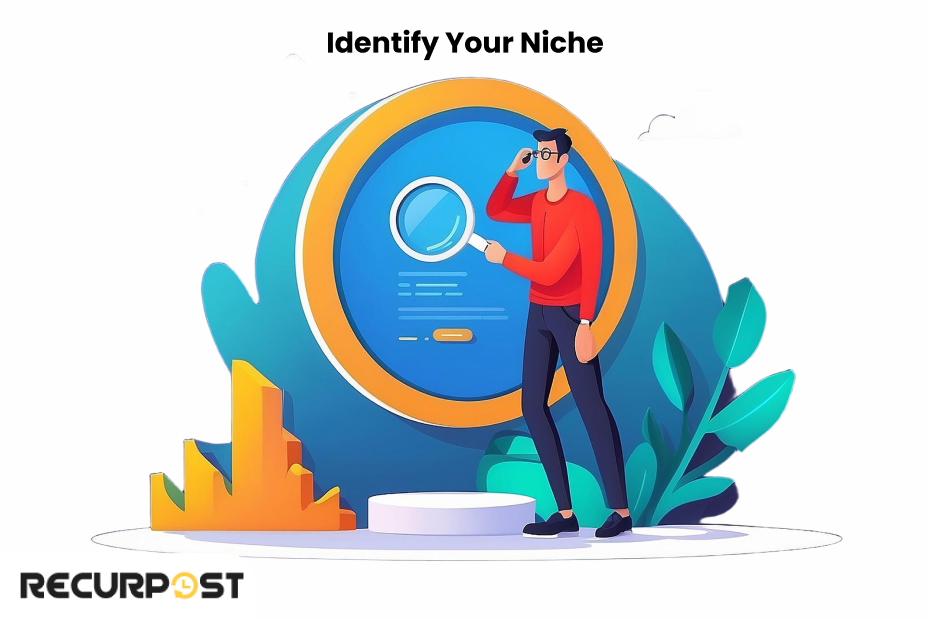
Start an influencer marketing agency by selecting a specific niche that aligns with your expertise and market demand. Focus on industries like beauty, fitness, or technology, or specific engagement types like environmental advocacy or lifestyle, to establish your specialty.
This approach tailors services to client needs and differentiates your agency from competitors. Market research, competitor analysis, and audience segmentation solidify your position and identify untapped opportunities.
If you’re passionate about pets and love showcasing their adorable antics online, consider carving out a niche as a pet influencer. Check out this guide on How to Become a Pet Influencer for some pawsome tips to get you started!
Building Your Business Plan
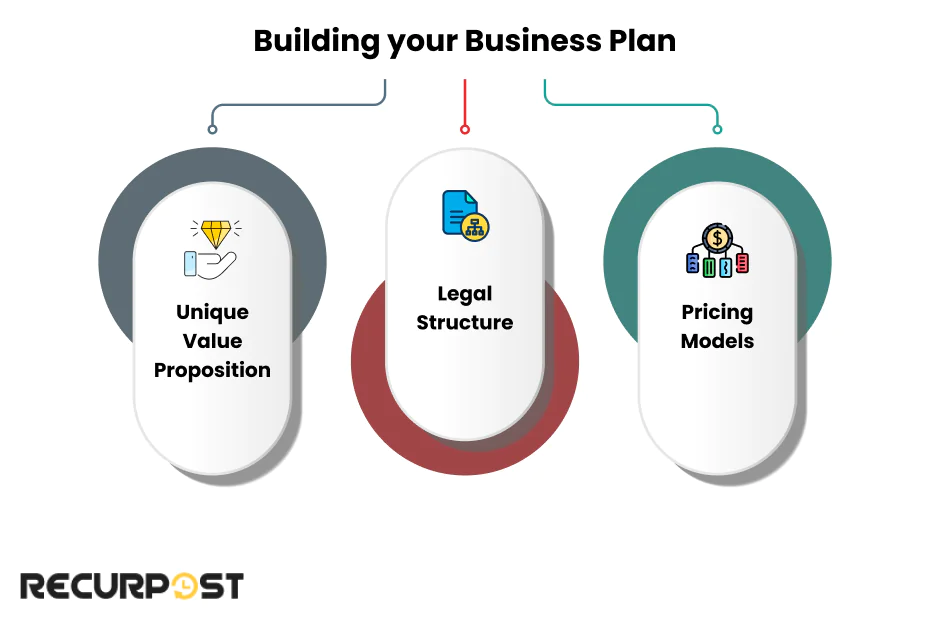
A solid business plan forms the foundation of a successful influencer marketing agency. The plan outlines business objectives, target market, service offerings, pricing strategy, financial projections, and growth strategy. Key components include:
- Unique Value Proposition (UVP): Articulate what makes your agency model unique – analytics capabilities, creative campaign strategies, or exclusive influencer network.
- Legal and Financial Structure: Select your business structure (LLC, corporation) and establish accounting systems. Determine initial funding sources from personal savings, loans, or investors.
- Pricing Models: Develop flexible pricing accommodating businesses from startups to established brands, including flat fees, commissions, or retainer-based pricing.
- Revenue Streams: Map diverse revenue streams, including campaign management fees (15-20% of budget), monthly retainers ($2,000-$10,000), talent management commissions (10-20% of influencer earnings), content creation packages, and consulting services.
- Operational Costs: Account for expenses including influencer discovery software, analytics tools, legal services, and team salaries. Allocate 30-40% of revenue for operational costs to maintain profitability.
- Scalability Framework: Design your business model for scalability. Start with project-based work, transition to retainer-based relationships, then develop specialized service tiers aligned with client budgets and objectives.
Assembling a Strong Team
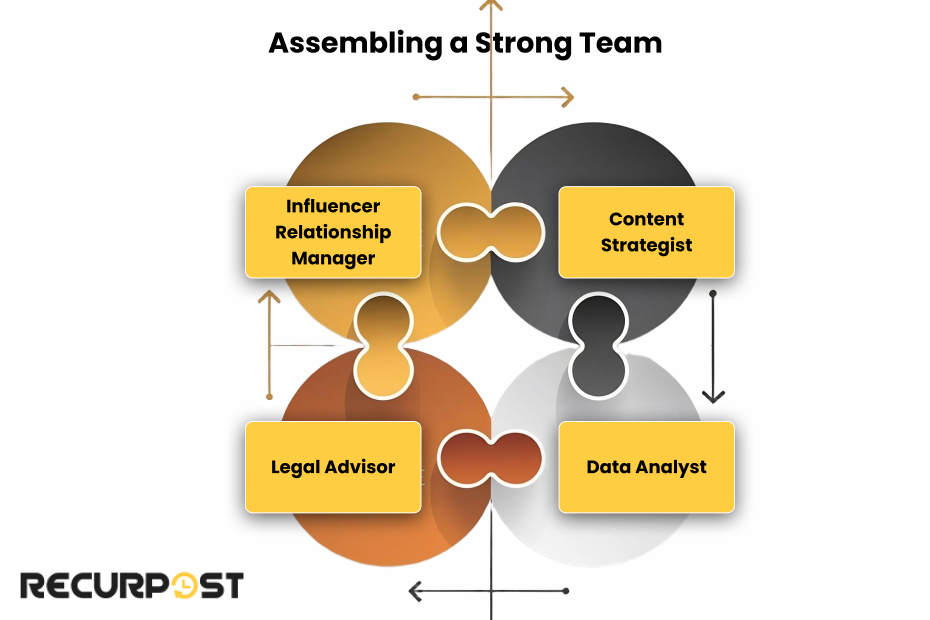
Your team structure forms the foundation of your agency. Include diverse skills, handling influencer outreach, relationship management, content creation, and analytics. Key roles include:
- Influencer Relationship Manager: Builds and maintains relationships with influencers.
- Content Strategist: Develops content ideas that align with client brands and influencer styles.
- Data Analyst: Monitors and reports on campaign performance.
- Legal Advisor: Ensures all campaigns comply with industry regulations and standards.
To stay competitive, invest in training and development to keep your team updated with the latest trends and technologies in influencer marketing.
Developing a Portfolio and Case Studies

Build a compelling portfolio documenting successful campaigns that showcase your agency’s planning, execution, and measurement capabilities. Start with smaller projects to demonstrate your skills. Include metrics highlighting campaign success: engagement rates, conversion rates, and ROI.
A closer look at Influencer Types and Niches
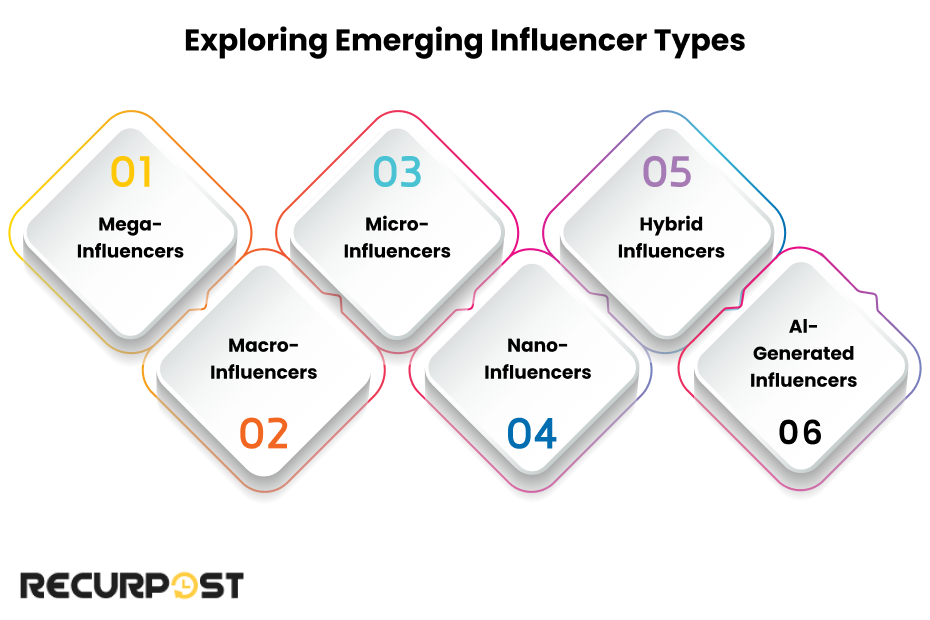
Understanding Different Influencer Tiers
Understanding different influencer types and their impact helps grow your agency. Influencers categorize into tiers based on follower count and influence:
- Mega-Influencers: These are the celebrities of the influencer world, typically with over a million followers. They have a broad reach but often come with high costs and lower engagement rates.
- Macro-Influencers: With follower counts ranging from 100,000 to a million, macro-influencers are often well-known figures within their niche. They balance reach with engagement, making them suitable for large-scale campaigns.
- Micro-Influencers: These influencers have between 10,000 and 100,000 followers. They typically boast high engagement rates and strong connections with their audience, making them valuable for targeted campaigns.
- Nano-Influencers: Nano-influencers have fewer than 10,000 followers but possess extremely loyal audiences. Their influence is often hyper-local or niche-specific, making them ideal for brands seeking deep, authentic engagement.
Exploring Emerging Influencer Types
Beyond these traditional categories, new types of influencers are emerging:
- Hybrid Influencers: These are influencers who blend multiple content forms, such as combining blogging, video content, and podcasting. They can offer a more comprehensive approach to brand storytelling.
- AI-Generated Influencers: Virtual influencers, powered by AI, are becoming more popular. These digital characters can interact with audiences without the unpredictability of human influencers.
- Niche Experts: These influencers are deeply embedded in specific sectors, such as tech, wellness, or eco-friendly products. Their specialized knowledge and loyal followers make them highly effective for brands in related industries.
Building an Influencer Management Agency
Influencer marketing agencies execute campaigns, while influencer management agencies represent influencers and manage their careers, requiring different approaches and skill sets.
1. Talent Management vs. Campaign Execution
Influencer management agencies represent creators as agents, handling partnerships, content strategy, and career development. Management agencies serve influencers first, taking commission (10-20%) from deals. This model builds deeper relationships with fewer influencers versus managing many creators for campaign work.
2. Essential Services for Influencer Management
Running an influencer management agency requires comprehensive services helping influencers grow their careers:
Contract Negotiation: Secure favorable terms and rates for your talent roster, protecting their interests while maximizing earnings.
Brand Partnership Curation: Identify and pursue partnerships that align with each influencer’s personal brand and growth objectives.
Content Strategy: Help influencers develop consistent, engaging content that grows their audience and attracts brand interest.
Career Development: Guide influencers on platform expansion, merchandise creation, and other revenue diversification opportunities.
Administrative Support: Handle invoicing, payments, and other business operations that creators often struggle with.
3. Building Your Talent Roster
Begin representing 3-5 micro or nano influencers within your niche, providing personalized attention while establishing your agency. Select creators with strong engagement rates and growth potential beyond follower counts. Gradually expand to more established influencers as you demonstrate success.
4. Compensation Structure
Influencer management agencies typically operate on commission-based models (10-20% of negotiated deals), aligning agency incentives with influencer success. Some agencies charge small monthly retainers for administrative services, while others operate solely on commission.
Exploring Cross-Platform Influence and Global Reach

1. Cross-Platform Influence
Agencies must manage influencers across varied platforms. Instagram remains popular, while Twitch (gaming), Discord (community building), and Substack (newsletters) grow rapidly. Each platform has distinct cultures and audience behaviors requiring tailored strategies to maximize impact.
2. Global Reach and Cultural Nuances
Expanding beyond local borders reaches diverse markets through international influencers. Understanding cultural nuances affecting consumer behavior becomes essential. Your team must manage cross-cultural communication and adapt campaigns for global audiences.
Setting Advanced Objectives and KPIs
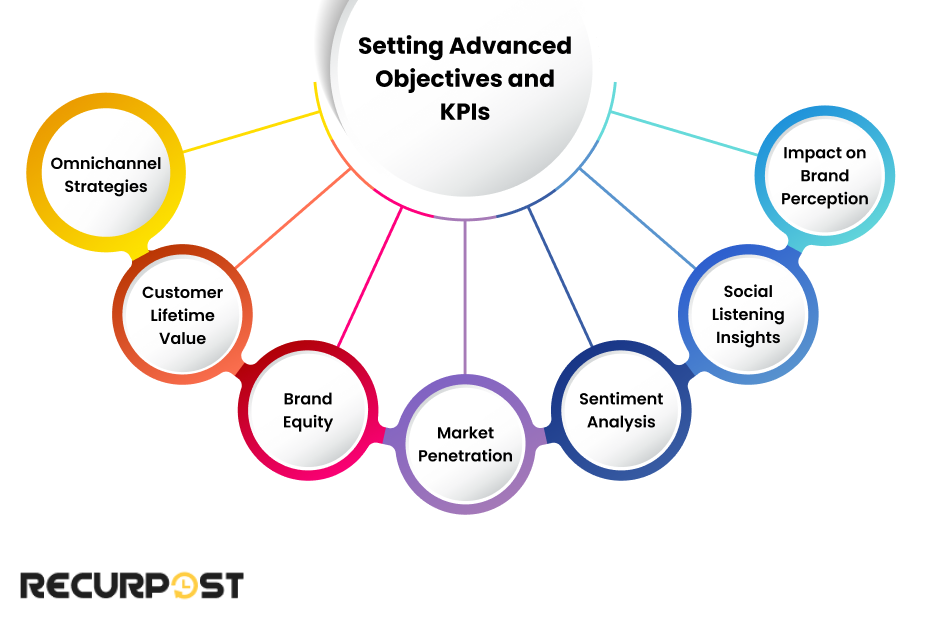
Advanced Objective Setting
Establish objectives for influencer campaigns beyond likes and shares. Integrate goals such as:
- Customer Lifetime Value (CLV): Focus on how influencer marketing campaigns can contribute to long-term customer retention and profitability.
- Brand Equity: Assess how partnerships enhance or detract from the perceived value of the brand.
- Market Penetration: Measure how well your campaigns are expanding a brand’s presence in targeted markets or demographics.
Beyond Engagement: Introducing New KPIs
Traditional engagement metrics are important, but they only tell part of the story. Consider incorporating the following KPIs:
- Sentiment Analysis: Track the tone of online conversations related to your campaigns to understand public perception.
- Social Listening Insights: Monitor social media channels for mentions of your brand or products, providing real-time insights into consumer opinions.
- Impact on Brand Perception: Use surveys or brand lift studies to gauge how campaigns affect consumer perceptions of the brand.
Aligning with Omnichannel Strategies
Finally, influencer marketing should be integrated into a brand’s broader social media marketing strategy. Ensure that your campaigns align with omnichannel strategies, where the influencer content complements other marketing efforts such as email campaigns, digital ads, and in-store promotions. This creates a cohesive brand experience across all touchpoints, maximizing campaign effectiveness.
Cutting-Edge Tools for Identifying the Right Influencers
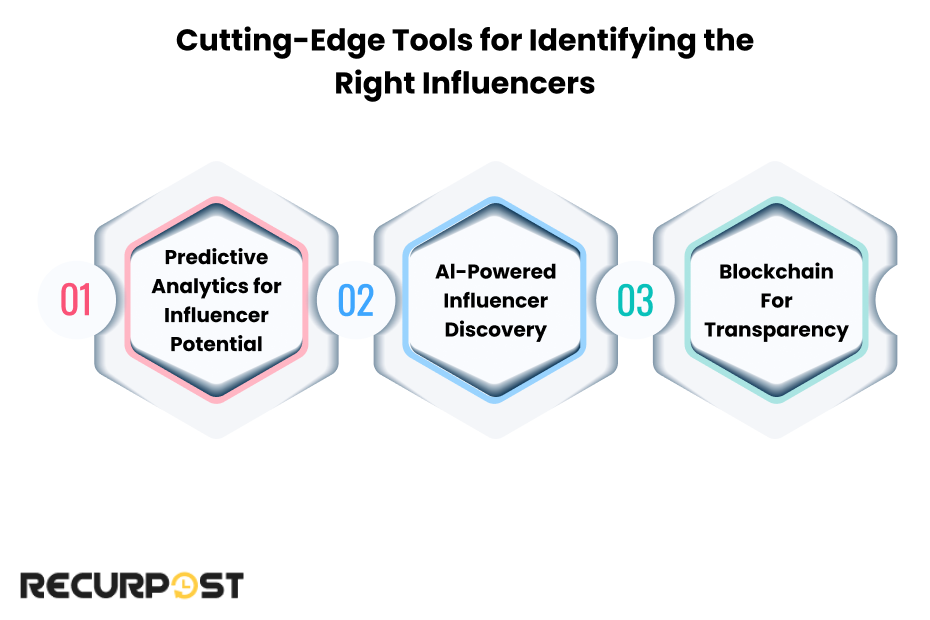
1. AI-Powered Influencer Discovery
AI is transforming how agencies identify and evaluate influencers. Tools like Upfluence, AspireIQ, and Heepsy use AI to analyze vast amounts of data, from follower demographics to engagement patterns. These tools can help your virtual influencer agency find influencers who fit the brand’s target audience and demonstrate strong potential for impactful collaborations. Using AI is essential for staying competitive in this dynamic industry.
2. Blockchain for Transparency
Blockchain technology is emerging as a tool for ensuring transparency and combating fraud in influencer marketing. It provides an immutable record of transactions and engagements, verifying the authenticity of an influencer’s metrics. This ensures that brands aren’t paying for fake followers or engagements. By incorporating blockchain into your operations, you can offer clients an extra layer of security and trust, ultimately setting your agency apart from competitors.
3. Predictive Analytics for Influencer Potential
Predictive analytics plays a significant role in modern influencer marketing. It allows agencies to forecast an influencer’s potential impact on future campaigns. By analyzing past performance, market trends, and audience behavior, predictive tools help identify which influencers are likely to deliver the best ROI for your clients. This data-driven approach to influencer selection is important for those looking to grow their agency effectively.
Influencer Marketing Tips That Drive Results
Learn what works—from outreach to ROI tracking—powered by AI insights.
This free tool gives you influencer marketing tips based on trends, platform algorithms, and your business type—helping you build authentic, profitable campaigns.
⭐ 4.3/5 average user rating (based on 2,000+ reviews)
How RecurPost Can Help with Influencer Marketing
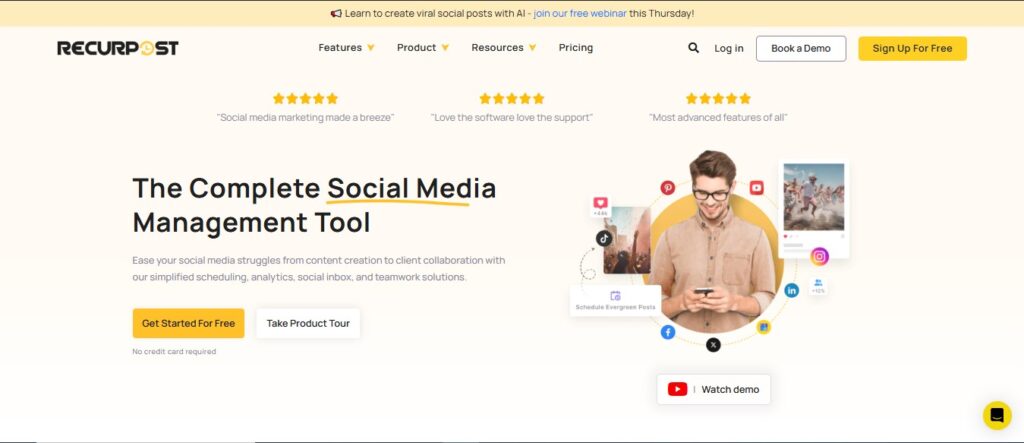
1. Automating Social Media Management
RecurPost simplifies managing multiple social media accounts by automating scheduling and ensuring consistent content publication. This automation frees up your team to focus on strategic tasks like influencer booking, enhancing overall efficiency.
2. Content Recycling for Influencer Campaigns
RecurPost’s content recycling feature allows agencies to repurpose high-performing posts, extending their reach and maintaining audience engagement without the need to constantly create new content. This is valuable for influencer campaigns where sustained engagement matters.
3. Collaborative Content Planning
RecurPost enables collaboration between agencies, brands, and influencers. By keeping all parties aligned, RecurPost reduces miscommunication risks when managing complex campaigns.
4. Analytics and Reporting
RecurPost provides detailed analytics, enabling agencies to measure campaign impact through key metrics like engagement rates and ROI. These insights help optimize campaigns and demonstrate their value to clients, keeping your agency competitive.
Integrating RecurPost with Influencer Tools
RecurPost’s ability to integrate with other influencer marketing platforms enhances workflow efficiency and ensures all campaign aspects are aligned. This integration helps scale operations within your agency.
Building and Sustaining Strong Relationships with Influencers
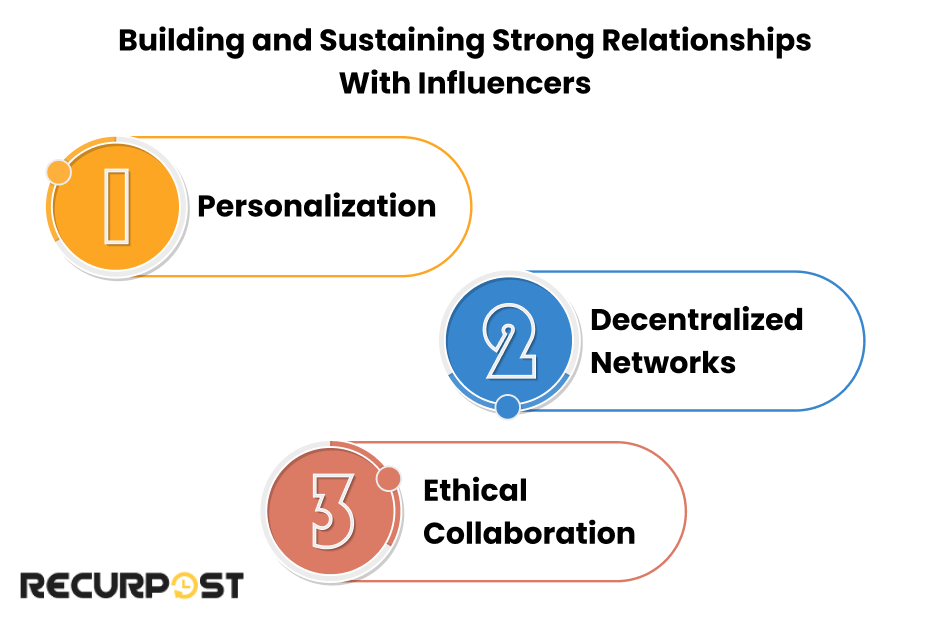
1. Personalization at Scale
Building strong relationships with influencers leads to long-term success. As your agency grows, managing these relationships at scale becomes challenging. AI tools can help personalize communications, ensuring each influencer feels valued. Personalized outreach, tailored offers, and individualized follow-ups build trust and loyalty.
2. The Rise of Decentralized Influencer Networks
Web3 technologies shift the dynamics of the influencer marketing landscape. Decentralized platforms allow influencers more control over content and monetization, creating more authentic partnerships. Agencies looking to stay ahead should understand how to operate within these decentralized networks. Offering influencers opportunities that align with this new digital economy maintains your agency’s competitive edge.
3. Ethical Collaboration
Ethical considerations are critical in influencer marketing. Consumers increasingly expect brands and influencers to uphold high ethical standards. When building relationships with influencers, ensure their values align with those of your clients. Prioritizing transparency, honesty, and social responsibility strengthens partnerships and resonates with audiences, enhancing your agency’s reputation..
Creating Future-Proof Campaigns
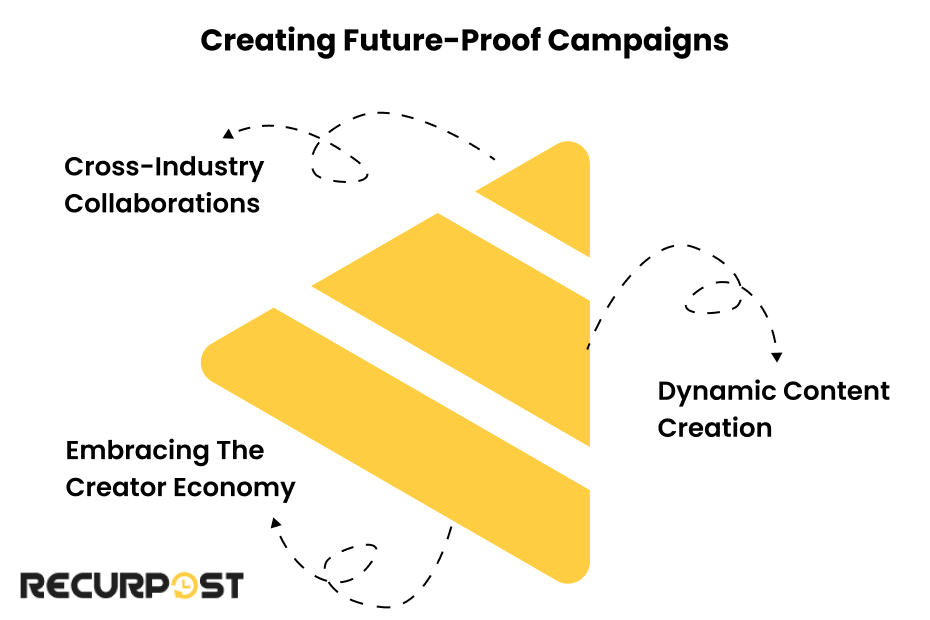
1. Embracing the Creator Economy
The creator economy grows as influencers view themselves as entrepreneurs. Position influencers as co-creators rather than content distributors for future-proof campaigns. This collaborative approach produces authentic content that resonates with audiences. Agencies should facilitate partnerships by offering influencers creative freedom while aligning content with brand goals.
2. Dynamic Content Creation
Relevance in influencer marketing requires agility. Use real-time social content ideas tools and platforms that allow influencers to produce and share content quickly, adapting to trends as they emerge. Tools like Canva, Adobe Spark, and TikTok’s native editing tools enable influencers to create engaging content on the fly. This keeps your campaigns timely and impactful in today’s fast-paced digital environment.
3. Cross-Industry Collaborations
One way to stand out is by creating campaigns that cross industry boundaries. For example, a fitness influencer might collaborate with a tech brand to showcase how wearable technology enhances workout routines. Collaborations attract broader audiences and introduce brands to new markets, making your campaigns more versatile. This strategy helps agencies maximize their impact.
Advanced Compliance and Disclosure Strategies
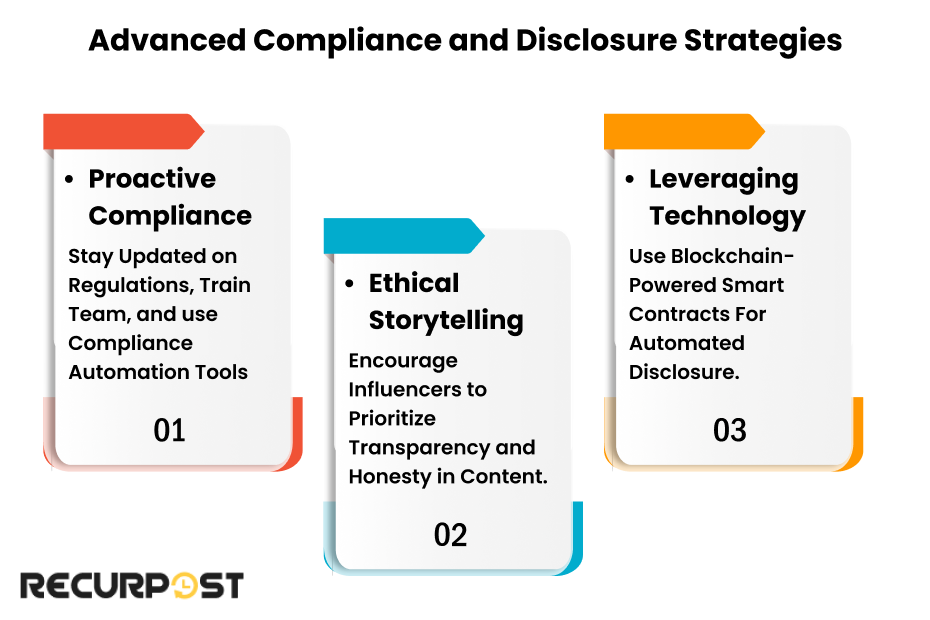
1. Proactive Compliance
Regulatory landscapes constantly evolve in influencer marketing. Campaigns must comply with latest guidelines from the Federal Trade Commission (FTC) and similar global regulators. Regular team training, updates on legal changes, and tools automating compliance checks maintain proper disclosure standards..
2. Leveraging Technology for Transparency
Smart contracts, powered by blockchain, can automate the disclosure process, ensuring that all content meets legal requirements without manual oversight. This technology reduces non-compliance risks and builds trust with audiences. Transparency becomes an integral part of your campaigns, enhancing credibility and customer loyalty. For a practical guide on establishing clear agreements with influencers, check out our post on Creating a Social Media Influencer Contract + Free Template.
3. Ethical Storytelling
Encourage influencers to engage in ethical storytelling centered on transparency and honesty. This approach aligns with regulatory requirements while making content authentic. Audiences find transparent content more relatable and trustworthy. Authentic content creates deeper engagement and stronger brand-consumer connections, supporting long-term success.
Managing Complex Influencer Campaigns
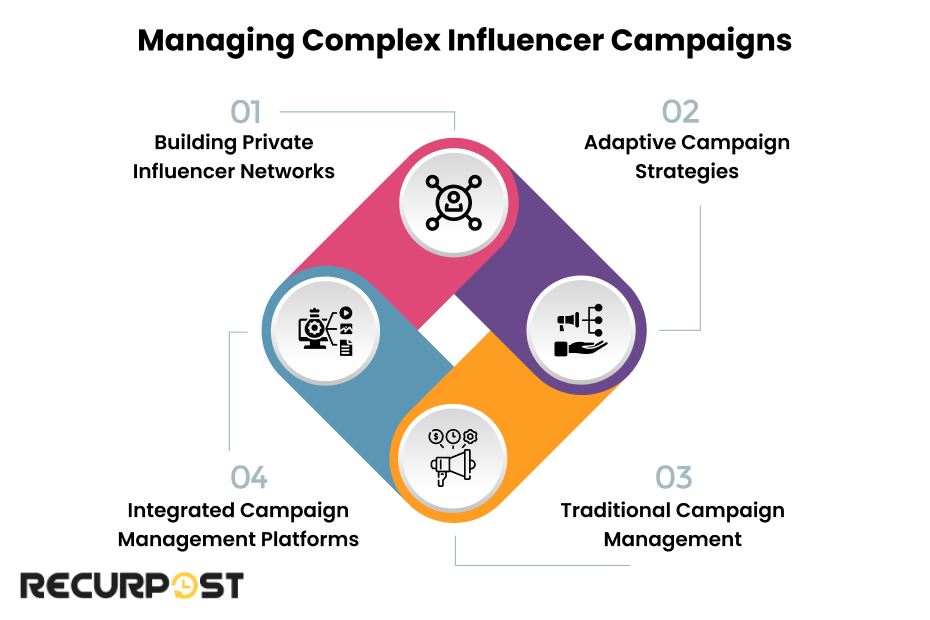
1. Integrated Campaign Management Platforms
As your agency grows, managing complex campaigns with multiple influencers across various platforms requires streamlined operations. Integrated influencer management platforms like Upfluence, CreatorIQ, or Hootsuite coordinate tasks, monitor progress, and manage communication across teams. These platforms keep all campaign aspects aligned and running smoothly, delivering consistent results.
2. Adaptive Campaign Strategies
In influencer marketing, adaptability determines campaign success. AI-driven insights enable real-time campaign adjustments—changing posting schedules, tweaking messages, or swapping influencers. Responsiveness to data enhances campaign effectiveness. This adaptability maintains campaign relevance and impact as market conditions change.
3. Building Private Influencer Networks
Create private networks of influencers who regularly collaborate with your agency. These networks foster a sense of community and loyalty, making it easier to manage relationships and ensure consistent quality across campaigns. These networks serve as a valuable resource for brands seeking reliable, vetted influencers for their campaigns. This approach works well for fitness influencer agencies, virtual influencer agencies, and many more such private influencer agencies.
Client Acquisition and Technology Integration
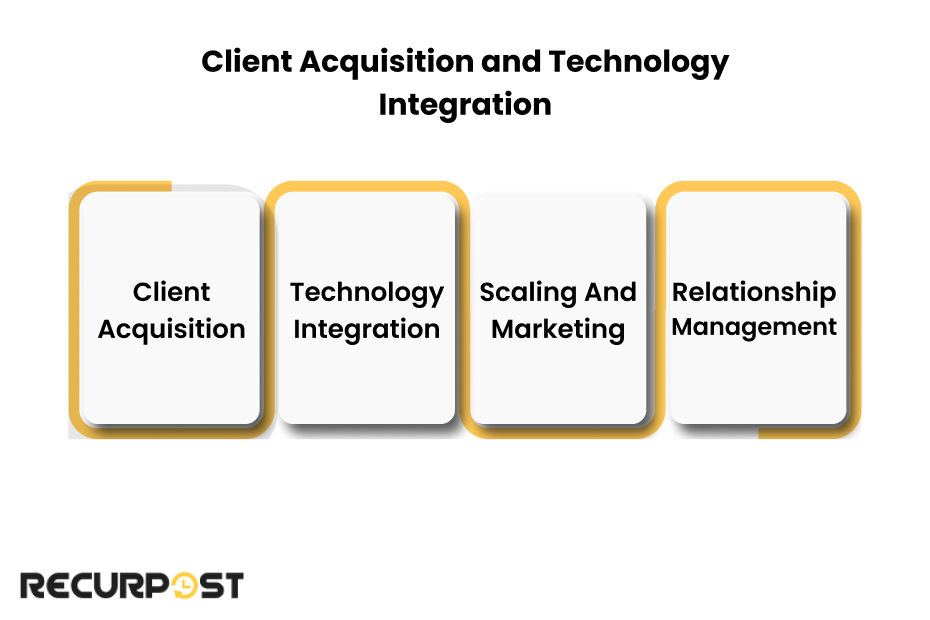
1. Client Acquisition and Relationship Management
Develop a strategic marketing plan to attract clients and grow your agency. This could include online marketing, attending industry events, and networking. After onboarding clients, focus on marketing agency tools. Regular meetings, detailed reports, and responsiveness to client needs help retain clients and foster long-term relationships.
2. Using Technology and Tools
Invest in state-of-the-art tools and platforms that can help you manage campaigns more efficiently, identify and assess influencers, and measure campaign impact. CRM systems, analytics platforms, and content management systems improve operational efficiency. For a comprehensive list of the best tools to enhance your influencer campaigns, check out our guide on influencer marketing tools.
3. Scaling Your Agency
Plan for growth from the outset. As your client base grows, you may need to scale your operations. This growth can involve hiring more staff, expanding your service offerings, or moving into new markets. Regularly revisit and revise your business plan to accommodate growth and ensure sustainability.
Effective Marketing and Measuring Success
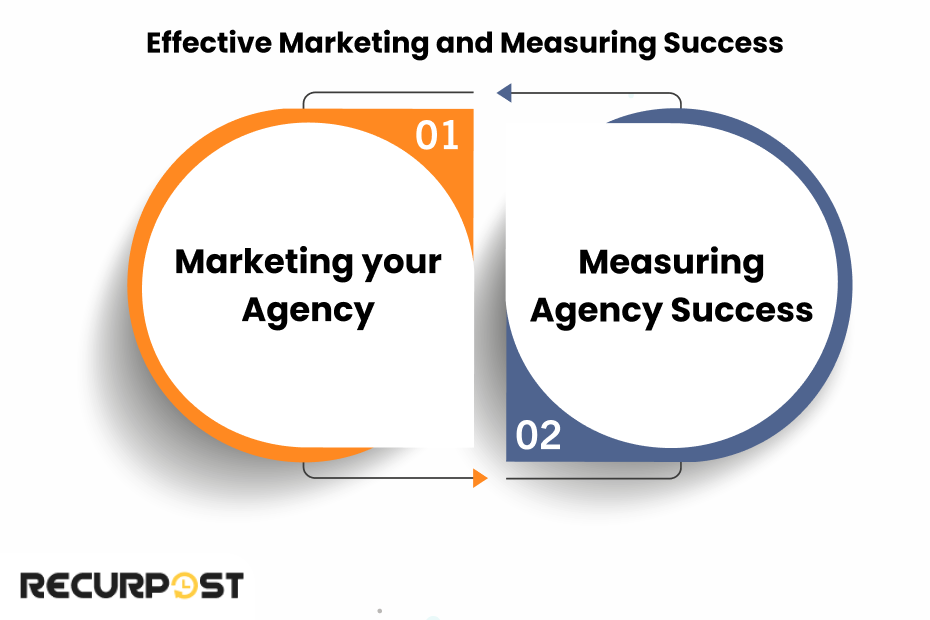
1. Marketing Your Agency
Effective marketing drives your agency’s success. Maximize your reach by developing a strong online presence, leveraging social media, creating content, and partnering with complementary businesses. Highlight your unique selling points and successes through case studies and testimonials to attract new clients.
2. Measuring Agency Success
Track and evaluate campaign success and overall business performance. Key performance indicators (KPIs) should include client retention rates, campaign ROI, and overall profitability. Regularly review these metrics to identify improvement areas and inform strategic decisions.
Measuring Success with Advanced Metrics
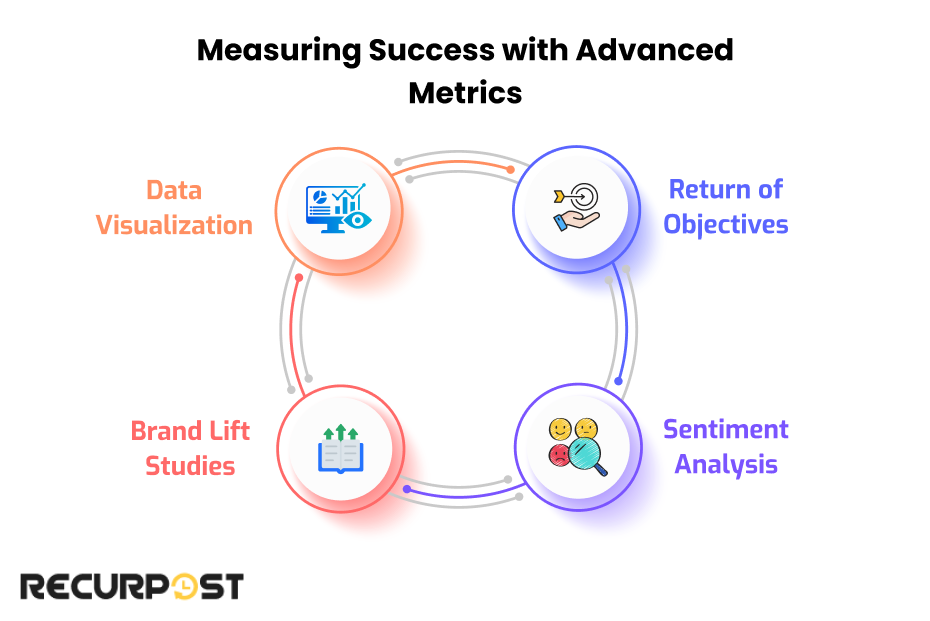
1. Beyond ROI: Measuring ROO (Return on Objectives)
While ROI is important, it doesn’t always capture the full impact of influencer marketing campaigns. ROO, or Return on Objectives, focuses on the broader goals of a campaign, such as brand awareness, audience engagement, or customer loyalty. This metric provides a holistic view of campaign success and aligns with the broader business model.
2. Sentiment and Brand Lift Studies
Sentiment analysis tools measure conversation tone around your brand, showing how campaigns are received. Similarly, brand lift studies help you understand the impact of influencer marketing campaigns on brand perception and customer attitudes. These metrics help evaluate campaign long-term impact and inform future strategies.
3. Data Visualization and Reporting
Having a good reporting system is necessary in today’s data-driven world. Invest in data visualization tools that turn complex data into clear insights. This helps with internal decision-making and provides clients with transparent reports demonstrating campaign value. Clear data visualization helps convey your success.
Addressing Emerging Challenges in Influencer Marketing
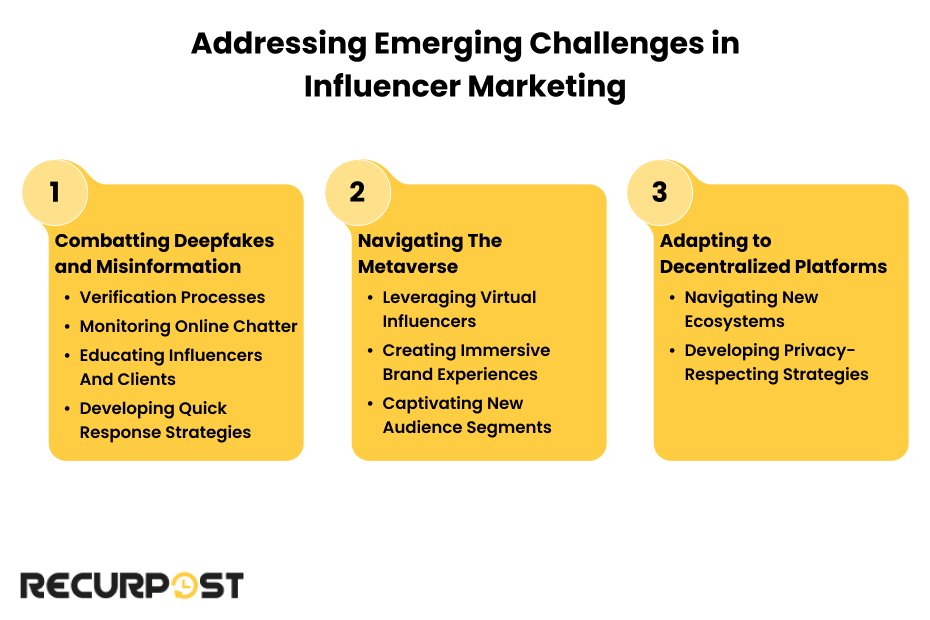
1. Combatting Deepfakes and Misinformation
Maintaining campaign authenticity and credibility is essential in an era of deepfakes and misinformation. Verify all content and monitor online discussions about your campaigns. Educate influencers and clients on misinformation risks and develop strategies to address issues quickly. This proactive approach maintains your agency’s trustworthy reputation.
2. Exploring the Metaverse
The metaverse offers new opportunities for influencer marketing as virtual and augmented realities integrate into consumer experiences. Learn how to operate within these digital spaces. Leverage virtual influencers and create immersive brand experiences to captivate new audience segments. This adaptation helps you stay relevant as the digital landscape evolves.
3. Adapting to Decentralized Platforms
Blockchain and decentralized platforms are transforming influencer marketing. These platforms offer greater privacy and give users more control over their data. Agencies must handle new ecosystems where traditional metrics and methods may not apply. Develop strategies that respect user privacy while engaging with decentralized communities. Stay informed about the legal and ethical implications of operating on these platforms to ensure compliance and maintain trust.
The Future of Influencer Marketing
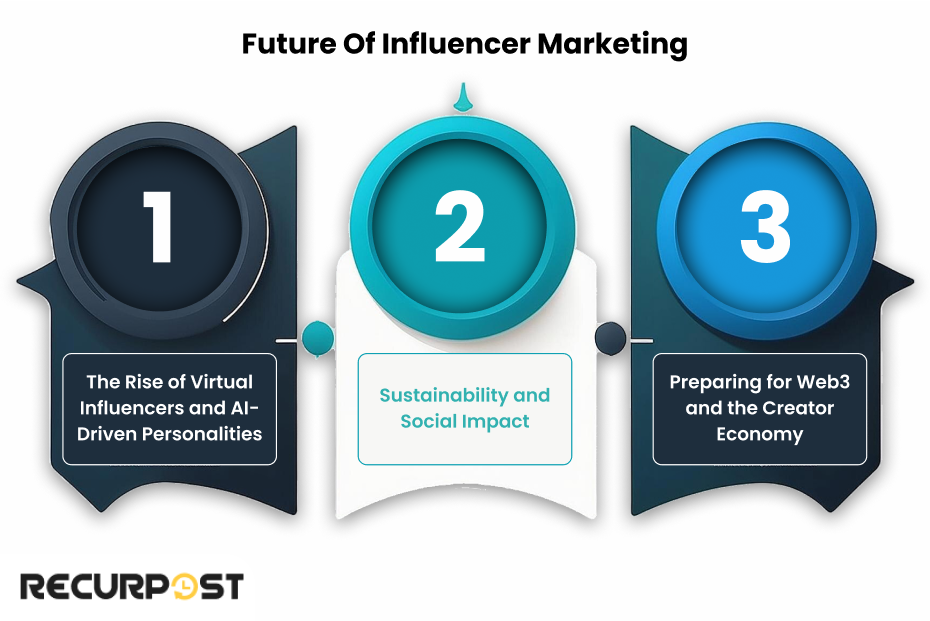
Influencer marketing is evolving into a powerful, data-driven industry. With AI, niche creators, and interactive content leading the way, brands are focusing on authenticity and meaningful connections. Future trends include the rise of micro-influencers, advanced personalization, and immersive experiences like AR and VR. It’s a dynamic space where creativity meets technology, reshaping how brands connect with audiences.
1. The Rise of Virtual Influencers and AI-Driven Personalities
Virtual influencers—digital characters created through AI and computer graphics—are gaining traction as brands seek innovative ways to connect with audiences. These virtual influencers can be precisely tailored to align with a brand’s image and messaging, offering a level of control and consistency that human influencers may not always provide. Influencer marketing agencies need to understand the technical aspects of creating and managing virtual influencers as this trend grows. Agencies need to navigate challenges and seize opportunities that virtual influencers present.
2. Sustainability and Social Impact
Consumers expect brands to take meaningful stands on sustainability and social responsibility. Influencers vocal about ESG issues help brands connect with like-minded consumers. Find influencers who align with brand values and show a genuine commitment to positive impact. Campaigns centered on sustainability or social causes resonate with audiences and build long-term brand loyalty.
3. Preparing for Web3 and the Creator Economy
Web3, built on blockchain technology, is revolutionizing digital marketing, including influencer marketing. Web3 offers greater decentralization, enhanced privacy, and new opportunities to monetize content through tokens and decentralized apps (dApps). Agencies must adapt as the creator economy grows, where individuals earn a living by producing content independently. Understanding this new environment and helping influencers monetize content is key to agency success.
Conclusion
Starting an influencer agency requires creativity, strategy, and technical expertise. Whether you choose a marketing-focused business model serving brands or a management-focused model representing talent, success depends on specializing in a niche, using cutting-edge technology, and building strong relationships. Your revenue structure—whether based on campaign fees, monthly retainers, or talent commissions—should align with your chosen model and target market. Finding local influencers who resonate with your target audience enhances these relationships.
The future of influencer marketing offers abundant opportunities, particularly in areas like virtual influencer agencies and fitness influencer agencies. Social media influencer agencies that adapt and innovate quickly will thrive in this evolving landscape.
RecurPost provides tools to streamline operations, enhance campaigns, and scale your agency efficiently. Integrating RecurPost into your workflow equips your agency to meet modern influencer marketing demands.
Pro Tip: Becoming a TikTok influencer or an Instagram influencer requires mastering platform trends, creating engaging authentic content, and consistently interacting with your audience to build trust and loyalty.
Frequently Asked Questions
1. How do AI tools benefit an influencer marketing agency?
AI tools streamline the process of finding and evaluating influencers by analyzing large datasets, making your selection more efficient and accurate. They also automate repetitive tasks, freeing up your team to focus on strategy, ultimately leading to better campaign outcomes.
2. What role does blockchain play in influencer marketing?
Blockchain ensures transparency and prevents fraud by verifying influencer metrics through immutable records. It also simplifies contracts with smart contracts that enforce terms automatically, enhancing trust, security, and efficiency in your operations.
3. Why are strong relationships with influencers important?
Strong relationships lead to successful, sustainable campaigns. When influencers feel valued through personalized communication and tailored offers, they are more likely to collaborate frequently and put extra effort into promoting your clients’ brands.
4. What are decentralized influencer networks, and why consider them?
Decentralized networks give influencers more control over content and monetization, fostering authentic partnerships. Engaging with these networks helps your agency adapt to the evolving digital landscape, leveraging privacy and transparency to build trust.
5. How to become an influencer agent?
To become an influencer agent, start by building expertise in influencer marketing and talent management. Network with influencers and brands, develop contracts and negotiation skills, and establish yourself as a reliable bridge for partnerships. Offering a clear value proposition, like securing better deals or helping influencers grow, is key
6. What metrics should measure influencer marketing success?
Beyond ROI, focus on Return on Objectives (ROO), sentiment analysis, and brand lift studies to assess campaign impact on brand awareness, loyalty, and perception. These metrics provide a broader view of campaign effectiveness.
7. How to start an influencer program?
To start an influencer program, identify your target audience and set clear goals. Research and recruit influencers aligned with your brand values. Develop a structured plan with guidelines, campaign details, and compensation models. Track performance using tools like analytics to measure ROI and refine your strategy.
8. What’s the difference between an influencer marketing agency and an influencer management agency?
An influencer marketing agency primarily serves brands by planning and executing campaigns with suitable influencers. They typically charge project fees or retainers based on campaign budgets. In contrast, an influencer management agency represents influencers as their talent agents, handling partnership negotiations, content strategy, and career development. Management agencies usually earn through commissions on the deals they secure for their talent roster

Vrinda Jagga is a dedicated content writer with over 2 years of experience in the field. She excels in creating engaging and informative content that resonates with diverse audiences. Vrinda’s expertise spans various industries, and she has a knack for crafting narratives that captivate readers.
